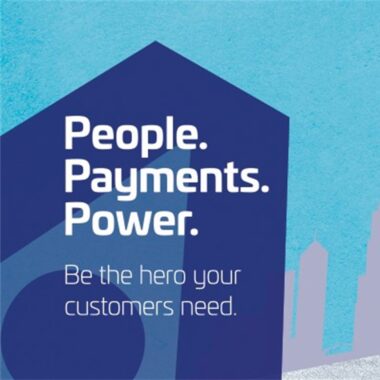
Last year, debit cards officially overtook notes and coins as the UK’s most popular form of payment. It’s a milestone that is long overdue – how often in the last month have you actively chosen to pay by cash and not card?
A recent report by Access to Cash suggests that cash transactions could unsurprisingly fall to just 10% of all payments within the next 15 years. Understandably, this has caused alarm among industry bodies and charity organisations concerned with the impact on those most vulnerable in society. The concern is that they could become increasingly marginalised by the lack of access to digital payments and banking.
However, cash is not going anywhere any time soon. In fact, payment technology will continue to co-exist with cash for the foreseeable future to provide consumers from all backgrounds with the freedom to choose how they want to manage their finances. However, instead of focusing our efforts on perpetuating cash payments, we should be doing more to drive digital inclusion, so that all citizens have access to the benefits of the digital economy.
Digital payments are much safer, much more convenient and can help increase financial inclusion. By widening access to new technology, we can democratise access to financial services and bring even the most marginalised in society into the digital world.
Digital payments can drive greater financial inclusion and help reduce poverty
Currently, there are more than 1.7billion people in the world who are still unable to participate in the formal financial system, and the majority are women. It makes it extremely difficult for those in poverty to save for the future and invest in their livelihood.
While paper-based money is currently the only option for unbanked individuals to pay for goods and services, it can also be a barrier to engaging in formal financial services. Recent data suggests that the evolution of payments can actually improve financial inclusion. For instance, research from the WorldBank shows that not only is the number of adults with a bank account growing (it’s currently estimated to be around 69% of the world’s population) but it is also helping to reduce poverty and gender pay imbalance.
In fact, the countries which are making digital payments a top priority are experiencing the biggest gains in financial inclusion and the most progress in gender equality. This is because it creates a payments infrastructure that encourages transparency, accountability and ultimately inclusion.
Driving change in the developing world
The UN-backed Better than Cash Alliance is one of the world’s leading movements on supporting the adoption of digital payment infrastructure. It educates governments worldwide on how digital innovation can boost financial inclusion and reduce gender pay imbalances.
One approach it is pioneering is using multiple UN agencies and partners to deliver tokenised cash and digital payments such as electronic vouchers, prepaid cards, mobile money, and direct bank transfers, to those who need it most. It’s designed for those living in economies that do not have an established digital payments infrastructure or for those whose country has been torn apart by political and economic turmoil or warfare. By using digitised cash, vulnerable groups can manage and control their money and protect it from being lost or stolen.
Moving forward, the Better than Cash Alliance is calling for a greater collaboration amongst agencies to deliver in-country payments infrastructure to support this model so it can be scaled up and rolled out further. It’s initiatives such as these that show that the move towards digital payments can be used to provide more security and inclusion to the most vulnerable people of society instead of marginalising them even more.
Making the case for biometrics
This drive towards financial inclusion is underpinned by technology; and one innovation in this space is the use of biometric authentication for card payments. As the world’s biggest card issuers offer pre-paid debit cards which don’t require a bank account or credit check to obtain, card payments are becoming increasingly accessible to individuals from marginalised communities. Biometric cards, using fingerprint authentication, are the next step in the evolution of card payments as they offer an easier and more secure way to transfer money.
For instance, biometric cards can be configured to work only with fingerprint verification to add enhanced protection for the most vulnerable in society who are at a higher risk of becoming victims of fraud and petty crime. Moreover, as the fingerprint data is stored only on the encrypted chip of the card, the cardholder’s privacy cannot be compromised.
Biometric cards can also remove the barriers that face those with literacy challenges as they don’t require a PIN to authorise payments. Since a fingerprint cannot be easily replicated, the card does not require a transaction limit, so it can be used for any volume of transactions both online and offline. This makes them a great alternative to cash which can be easily lost or stolen.
Thanks to the increased focus on security and their ease of use, biometric cards can help provide a reliable alternative to cash for the most vulnerable in society.
Recognising the opportunity in front of us
While cash payments will continue to play an important role in modern society, the growing adoption of digital payments can make access to financial services easier, faster and more affordable.
Movements such as the Better than Cash Alliance demonstrate that the security and inclusion benefits of digital banking, are recognised at a global level, and a real solution to a very pressing issue.
By providing access to digital payments, we can ensure that everyone is able to enjoy the financial safety and convenience that has become a staple benefit of the modern world.


